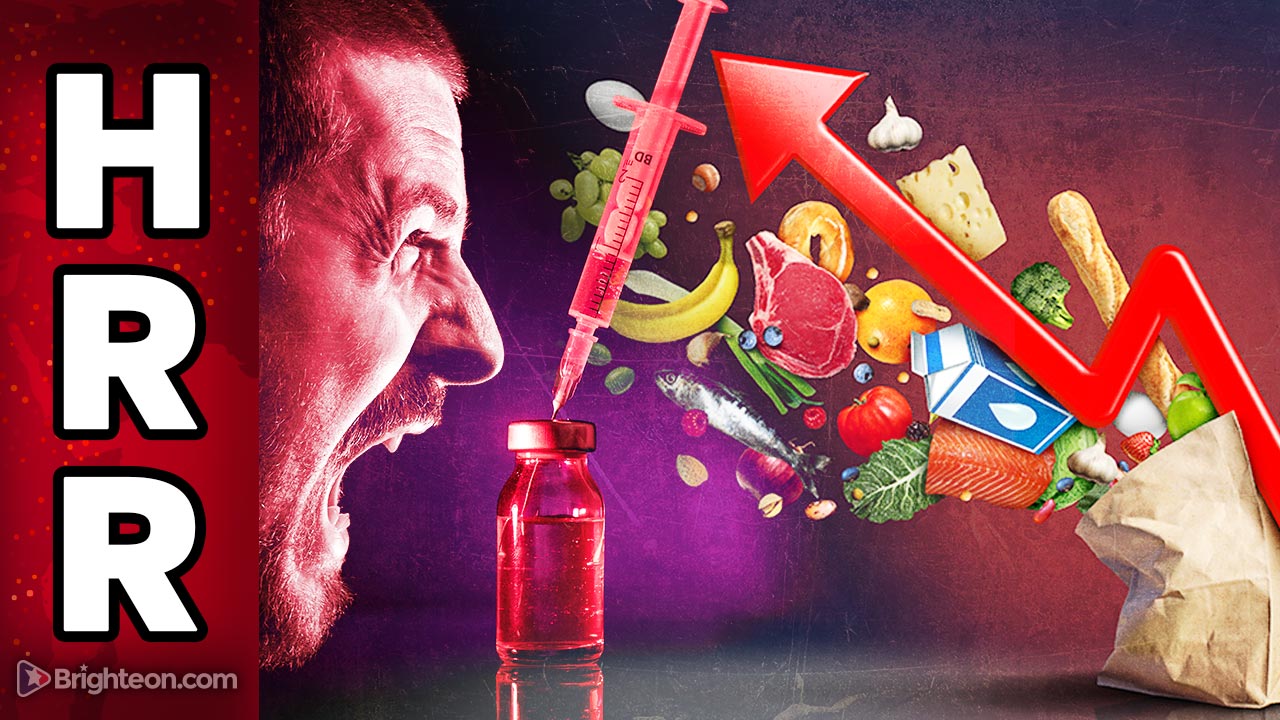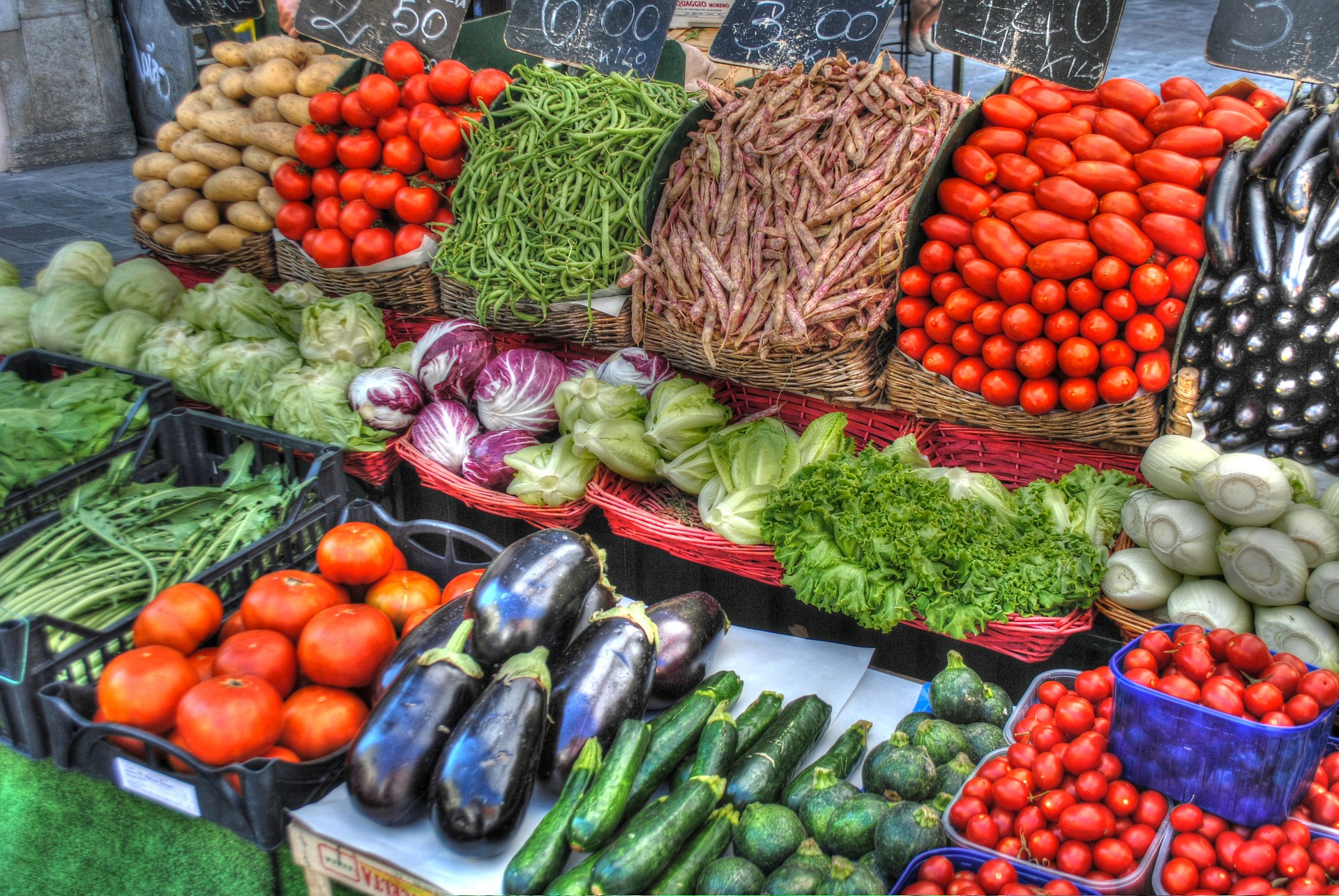The global food crisis just got a whole lot worse
10/31/2022 / By News Editors

It appears that the global food crisis that started in 2022 is going to go to an entirely new level in 2023. As I have been documenting on my websites, worldwide supplies of food have been getting tighter and tighter for months. Historic droughts have been crippling food production all over the northern hemisphere, much less fertilizer is being used in poorer countries because of how insanely expensive it has become, and the war in Ukraine has restricted the flow of agricultural exports out of one of the most important breadbaskets on the entire planet. Thankfully, a deal that was signed in July had allowed hundreds of ships loaded with precious grain to travel through the war zone successfully. But now that deal is completely dead and the Russians have resumed their blockade of Ukrainian ports…
(Article by Michael republished from EndOfTheAmericanDream.com)
Russia resumed its blockade of Ukrainian ports on Sunday, cutting off urgently needed grain exports to hungry parts of the world in what President Biden called a “really outrageous” act.
Biden — speaking in Wilmington, Del. — warned that global hunger could increase because of Russia’s suspension of a U.N.-brokered deal to allow safe passage of ships carrying grain from Ukraine, one of the world’s breadbaskets.
“It’s really outrageous,” Biden said Saturday. “There’s no merit to what they’re doing. The U.N. negotiated that deal and that should be the end of it.”
So why did the Russians do this?
Is it just because they decided to be mean?
No, it is because the Ukrainians (with help from their western allies) stupidly decided to attack Russia’s Black Sea fleet with a bunch of drones…
Hours later, a statement by the foreign ministry in Moscow said: “The Russian side cannot guarantee the safety of civilian dry cargo ships participating in the ‘Black Sea Initiative’, and suspends its implementation from today for an indefinite period.”
It said the move was “in connection with the actions of the Ukrainian armed forces, which were led by British specialists” and that these actions “were directed… against Russian ships that ensured the functioning of the said humanitarian corridor”.
Moscow claimed 16 aerial and maritime drones were destroyed, and that only a minesweeper had sustained damage.
What did they think was going to happen?
Did they actually believe that the Russians were just going to stand aside and allow the Ukrainians to sell their grain to the rest of the world after their ships had been attacked?
That is not how the real world works.
Since the deal was originally signed in July, over 9 million tons of grain had safely left Ukrainian ports.
Now that deal is dead, and this is going to make our rapidly growing food crisis even worse.
Even now, there are tens of millions of people in poor countries around the world that are on the brink of starvation…
Indeed, the United Nations Food and Agriculture Organization reports that the ongoing war in Ukraine has brought 70 million people to the brink of starvation. In addition, the war also affected the food supply of another 345 million people. The Executive Director of the UN World Food Program, David Beasley, recently said, “It is incredibly troubling that 50 million of those people in 45 countries are suffering from very acute malnutrition…” Since Russia invaded its neighbor on Feb. 24, Beasley said, soaring food, fuel, and fertilizer costs have driven 70 million people closer to starvation.
As shortages intensify and food prices soar, unrest is inevitably going to erupt all over the planet.
For example, just check out what has already been happening in Tunisia…
Tunisians have been hit with soaring food prices and shortages of basic staples in recent weeks, threatening to turn simmering discontent in the North African country – the cradle of the Arab Spring protests – into larger turmoil.
Sugar, vegetable oil, rice, and even bottled water periodically disappear from supermarkets and grocery stores. People stand in line for hours for these food essentials that have long been subsidized and are now increasingly available in rations only. When they do appear on the shelves, many people cannot afford to pay the staggering price for them.
Sadly, this is just the beginning.
Here in the United States, conditions are certainly a whole lot better than they are in Tunisia, but there are several factors which could cause our situation to deteriorate significantly in the months ahead.
First of all, almost 75 percent of the areas where winter wheat is grown in the U.S. are currently suffering at least some level of drought…
La Niña has returned for the third consecutive winter, allowing for drier-than-average conditions across America’s crop belt. Some farmers told Bloomberg that conditions are so dry that “fertilizer is evaporating from the soil, and plants are struggling to emerge from the ground.”
The odds are stacking up that this winter’s growing season in the Midwest is going to be a bad one. The latest government data shows drought is intensifying across the western half of the US.
As for winter wheat, nearly 75% of the crop areas are in a drought, the highest level in decades.
Secondly, a potential rail strike threatens to cause severe supply chain problems all across America starting next month.
Let us hope that the strike does not materialize, because it would really disrupt the flow of goods across the country for as long as it lasts.
Thirdly, it appears that the entire western world may be wrestling with temporary shortages of diesel fuel in the months ahead. For much more on this, please see my recent article entitled “A Crippling Shortage Of Diesel Fuel Threatens To Devastate Western Economies In 2023“.
These latest issues just add to the growing list of problems that the food industry has been experiencing. According to Kraft Heinz CEO Miguel Patricio, higher prices and supply chain headaches are likely to continue to be with us for the foreseeable future…
Kraft Heinz CEO Miguel Patricio says higher inflation and supply issues are coursing through the food industry, forcing companies to adopt new strategies for everything from production to promotion to packaging.
And he doesn’t see an end to either issue anytime soon.
“We’ve already increased the prices that we were expecting this year, but I’m predicting that next year, inflation will continue, and as a consequence [we] will have other rounds of price increases,” Patricio said in an interview with CNN Business.
But while we are dealing with significantly higher prices and occasional shortages, people in poor countries on the other side of the planet will literally be trying to figure out where to get enough food to feed their families.
The UN has already warned us that “multiple famines” are likely in 2023, and with each passing day the number of people living on the brink of starvation just keeps getting larger.
This is a global crisis that isn’t going away, and thanks to new developments in Ukraine it just got even worse.
Read more at: EndOfTheAmericanDream.com
Submit a correction >>
Tagged Under:
big government, chaos, collapse, famine, food collapse, food crisis, food scarcity, food supply, hunger, panic, rationing, Russia, starvation, supply chain, Ukraine, UN, war, World War III
This article may contain statements that reflect the opinion of the author
RECENT NEWS & ARTICLES
FoodRiots.news is a fact-based public education website published by FoodRiots.news Features, LLC.
All content copyright © 2021 by FoodRiots.news Features, LLC.
Contact Us with Tips or Corrections
All trademarks, registered trademarks and servicemarks mentioned on this site are the property of their respective owners.



















